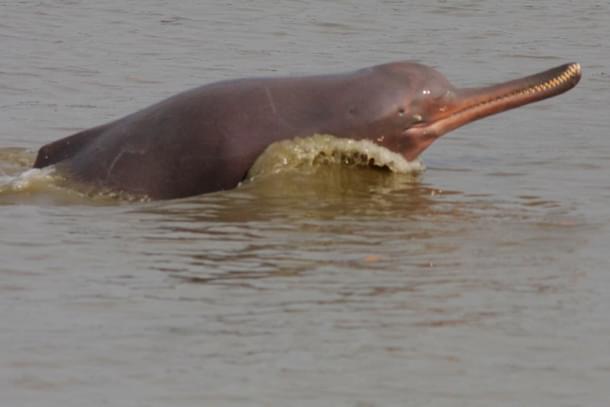News Brief
First-Of-Its-Kind Survey Finds Over 6,300 Dolphins In Indian Rivers; Uttar Pradesh Boasts Highest Population, Followed By Bihar
Nishtha Anushree
Mar 04, 2025, 12:10 PM | Updated 12:10 PM IST
Save & read from anywhere!
Bookmark stories for easy access on any device or the Swarajya app.


A government report released on Monday (3 March) has disclosed the inaugural population assessment of river dolphins in India, indicating the existence of 6,327 dolphins across the Ganga, Brahmaputra, and Indus river systems, Business Standard reported.
Under the umbrella of 'Project Dolphin', an extensive census was undertaken for the inaugural time to gauge the number of river dolphins in eight Indian states - Uttar Pradesh, Bihar, Jharkhand, Rajasthan, Madhya Pradesh, West Bengal, Assam, and Punjab.
The report indicates that Uttar Pradesh boasts the largest dolphin population at 2,397. Bihar comes in second with 2,220 dolphins, followed by West Bengal with 815, Assam with 635, Jharkhand with 162, Rajasthan and Madhya Pradesh each with 95, and Punjab with a mere three.
The distinctive Ganges river dolphin inhabits the Ganga-Brahmaputra-Meghna river system and its associated tributaries, spanning across countries such as India, Bangladesh, Nepal, and Bhutan.
The Indus River system in India is home to a modest community of the Indus river dolphin, which is closely related to the Ganges river dolphin.
The report named 'Population Status of River Dolphin in India' is known to be among the most extensive freshwater surveys globally. It encompasses the entire habitat of the Ganges river dolphin in the Ganga and Brahmaputra, and the Indus river dolphin in the Beas river.
The study approximated the population of Ganges river dolphins to be 6,327 (with a range of 5,977-6,688) and identified three Indus river dolphins. The results indicate that dolphins flourish in regions with sufficient water depth and limited human interference.
On 15 August 2020, Prime Minister Narendra Modi introduced Project Dolphin, an initiative aimed at the conservation of dolphins and various other aquatic ecosystems.
Keeping track of dolphin numbers is essential for their preservation, particularly for river dolphins. These creatures have a slow reproduction rate and inhabit some of the globe's most endangered environments.
The research, which spanned more than 8,000 kilometers, took place from 2021 to 2023. It encompassed eight states, covering the areas along the Ganga and Brahmaputra rivers, their tributaries, and the Beas river.
In the course of the study, evaluations were conducted on 58 rivers. Active boat surveys were carried out on 28 of these rivers, whereas the remaining 30 were examined via road surveys. The focus was primarily on areas where there had been historical reports of the Ganges river dolphin.
Nishtha Anushree is Senior Sub-editor at Swarajya. She tweets at @nishthaanushree.





